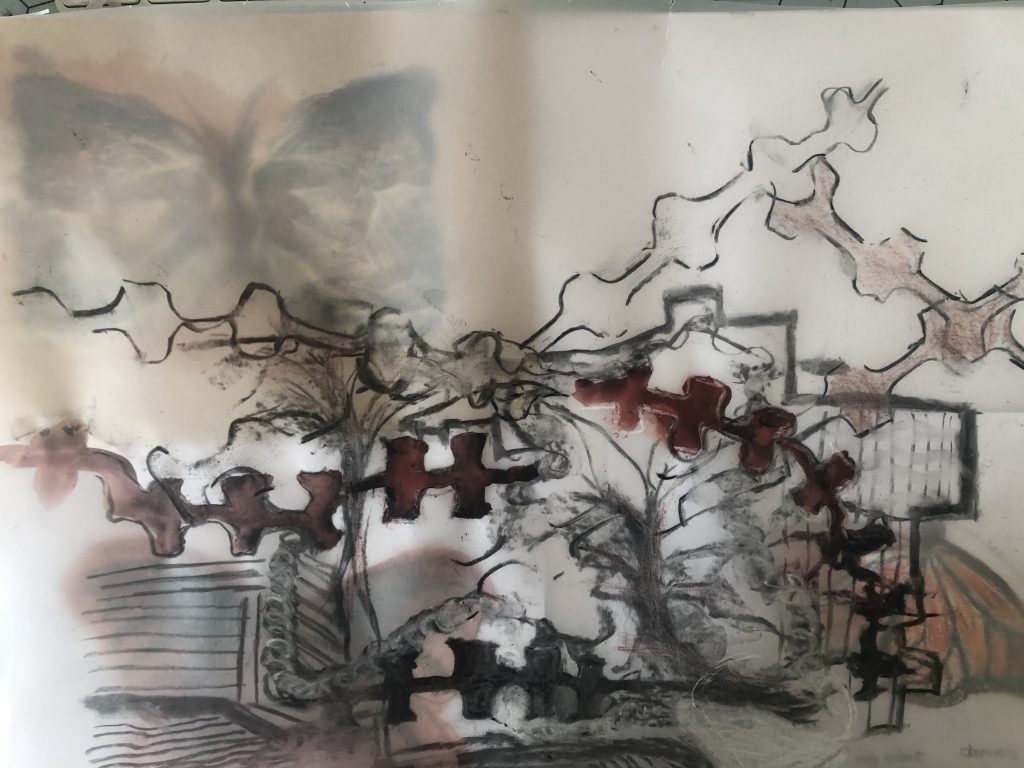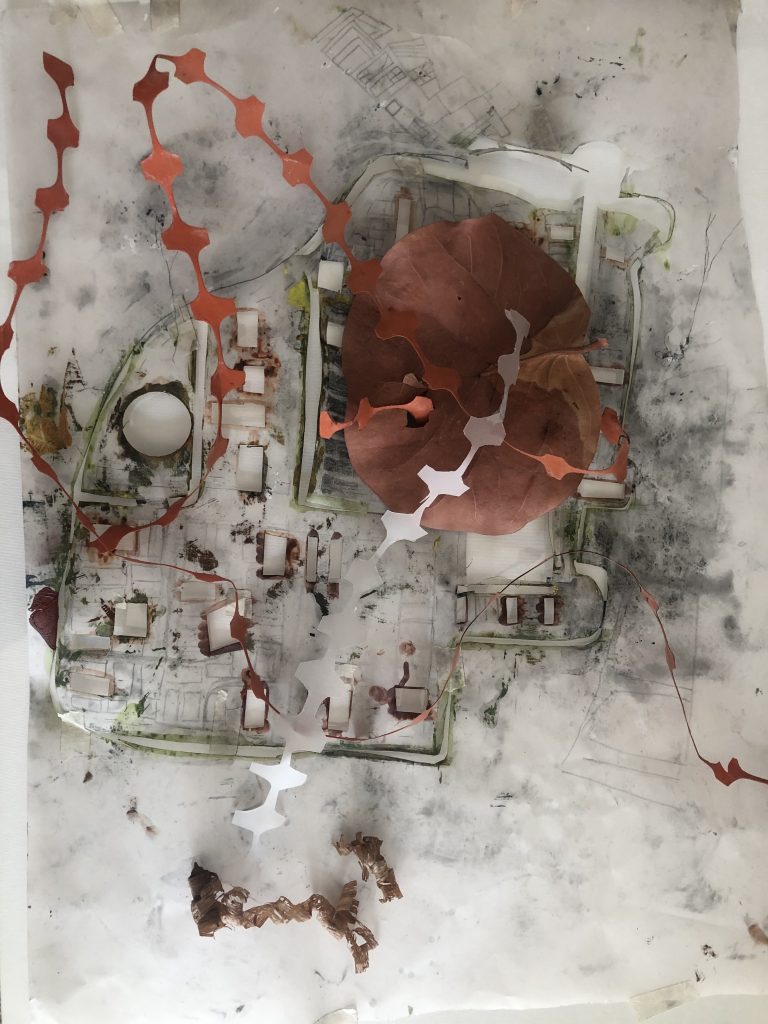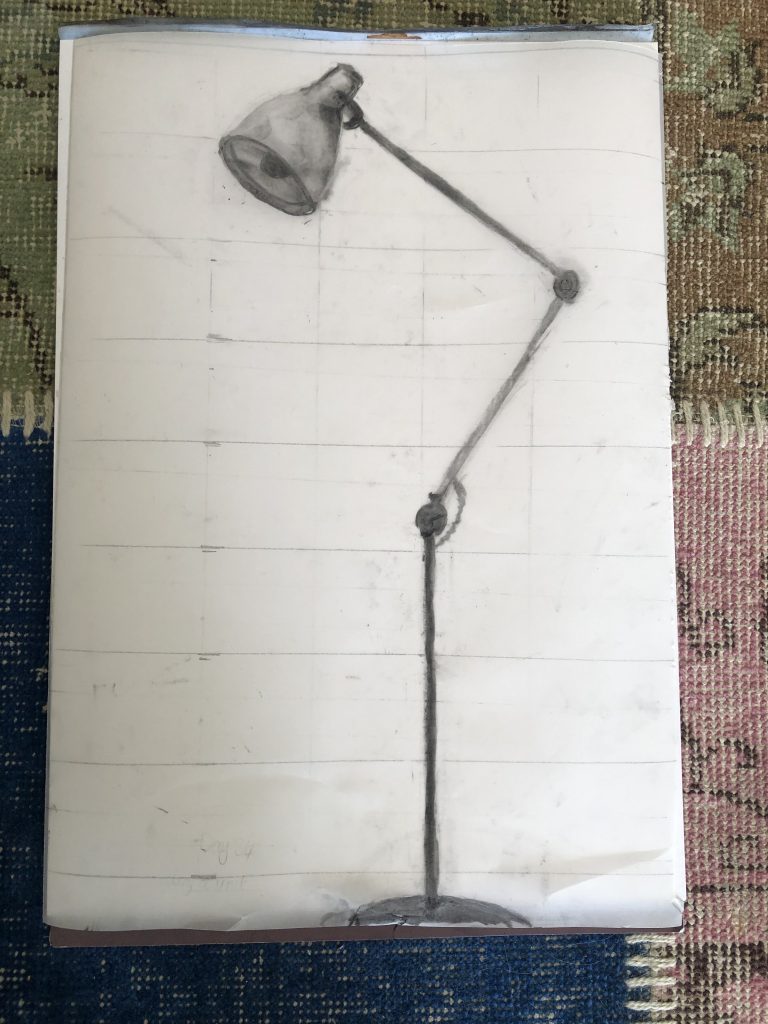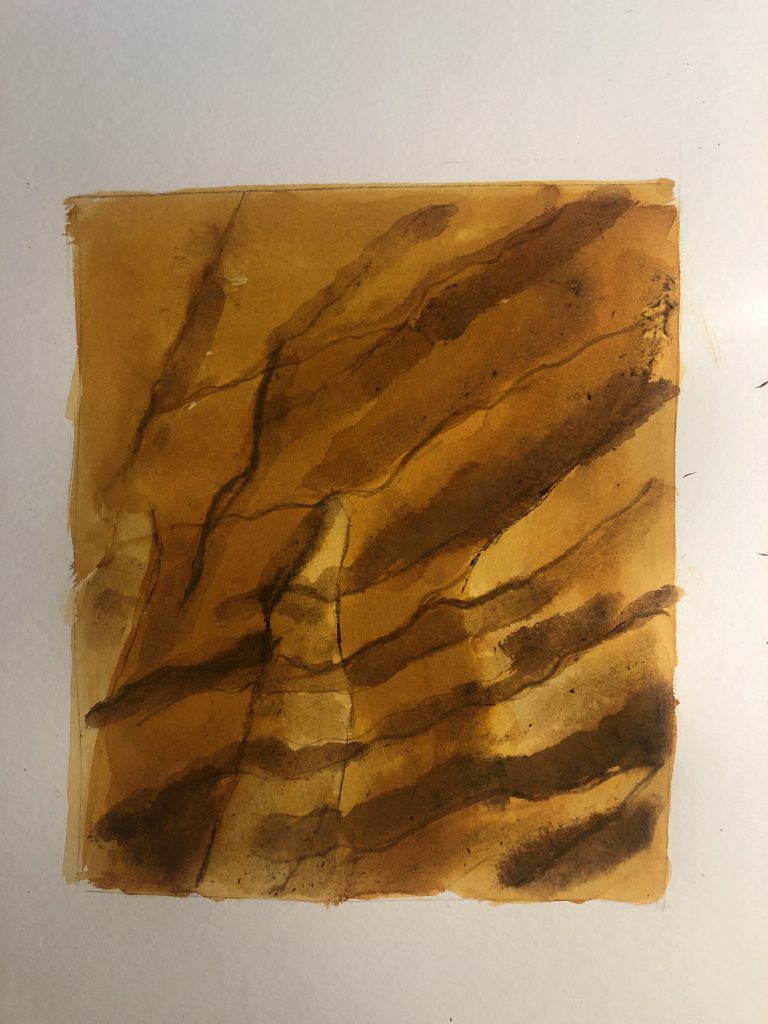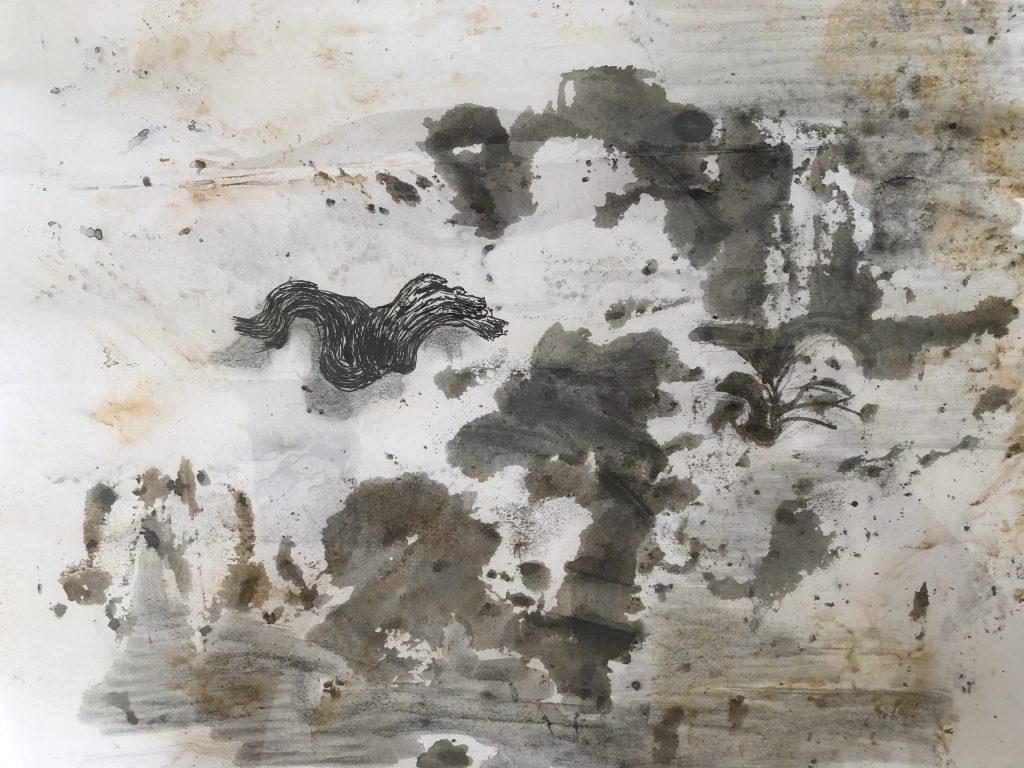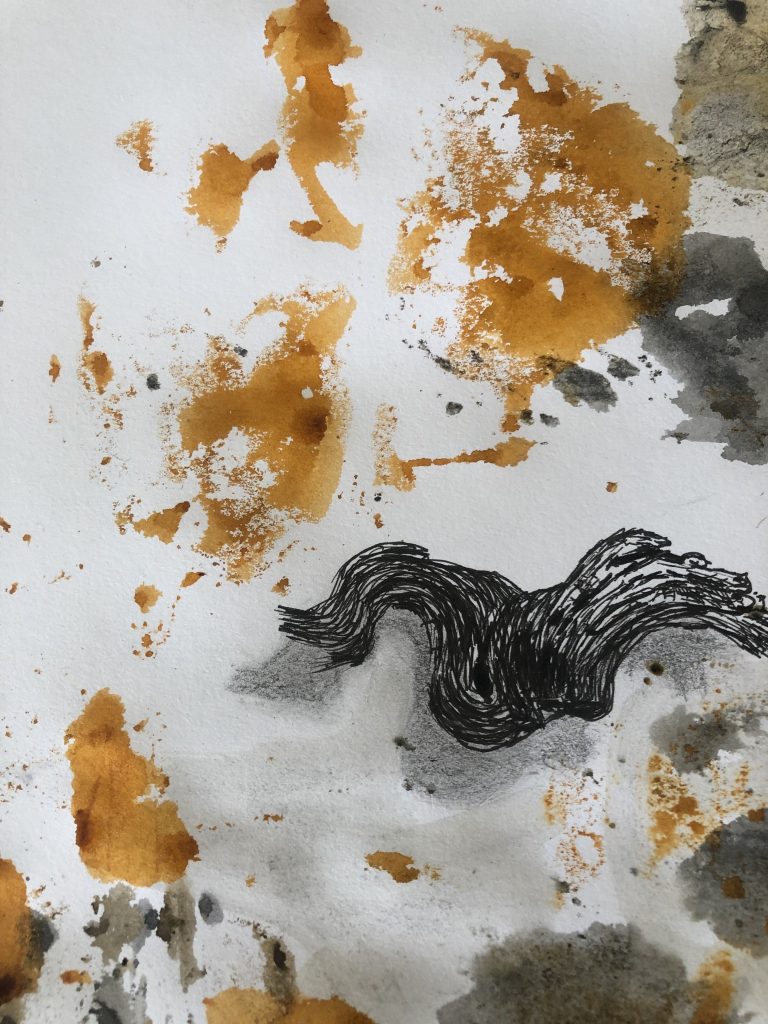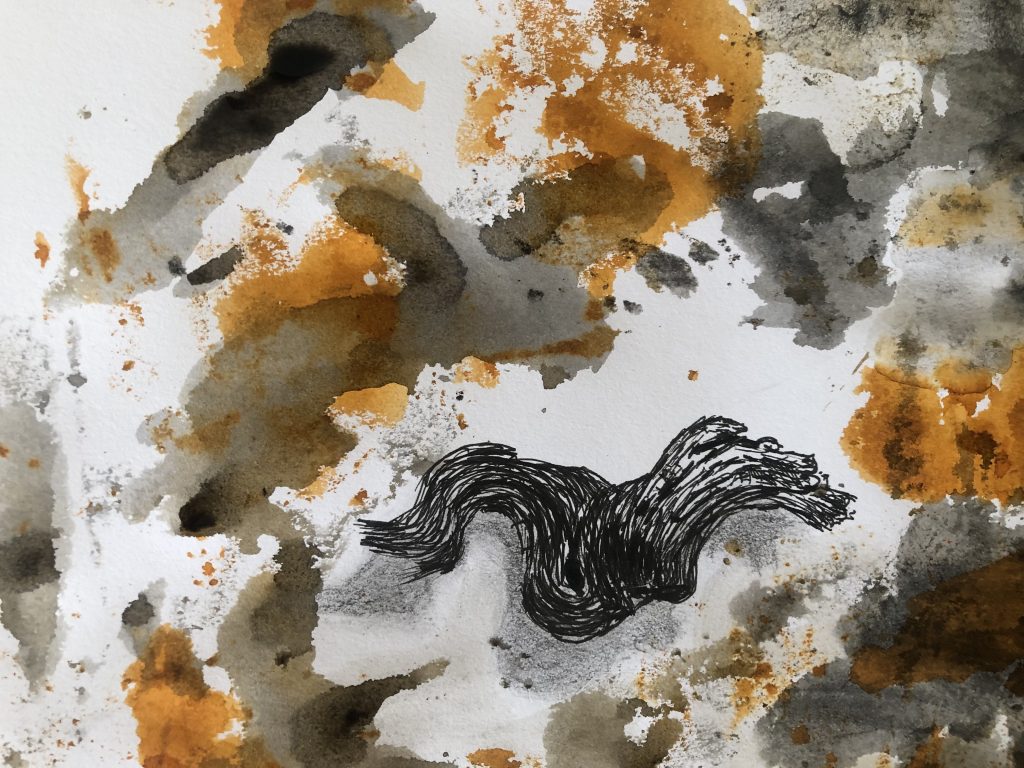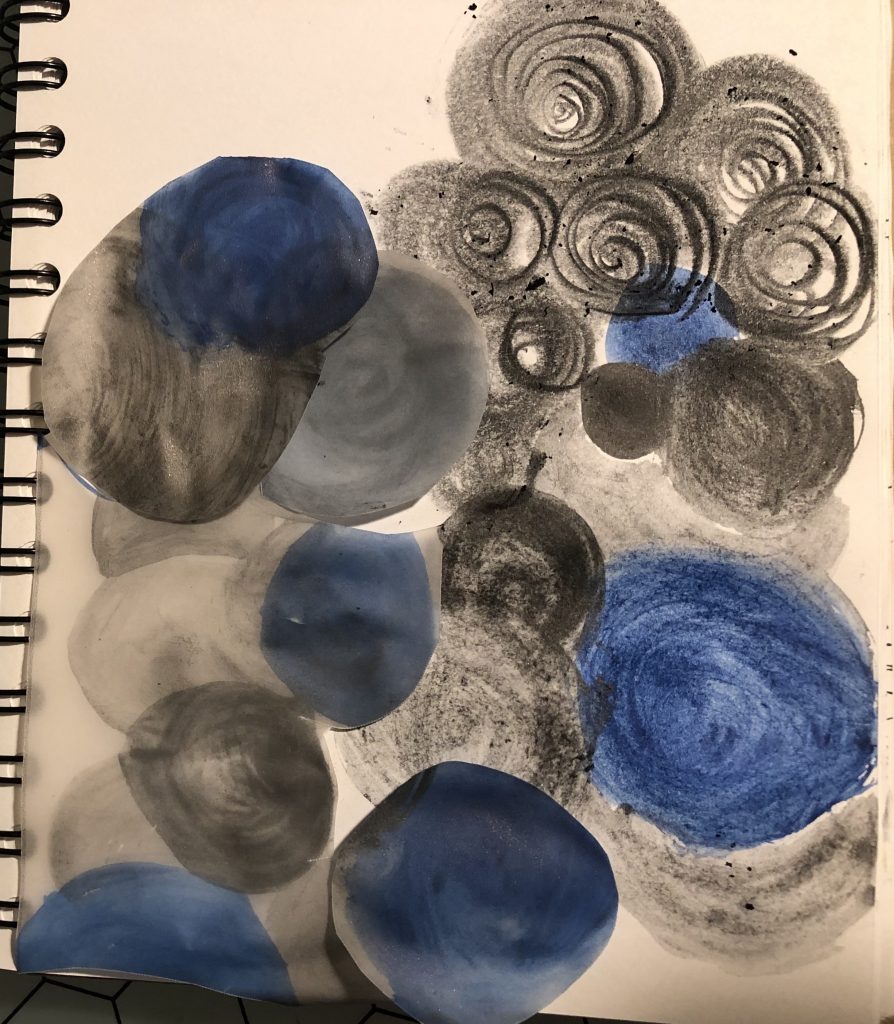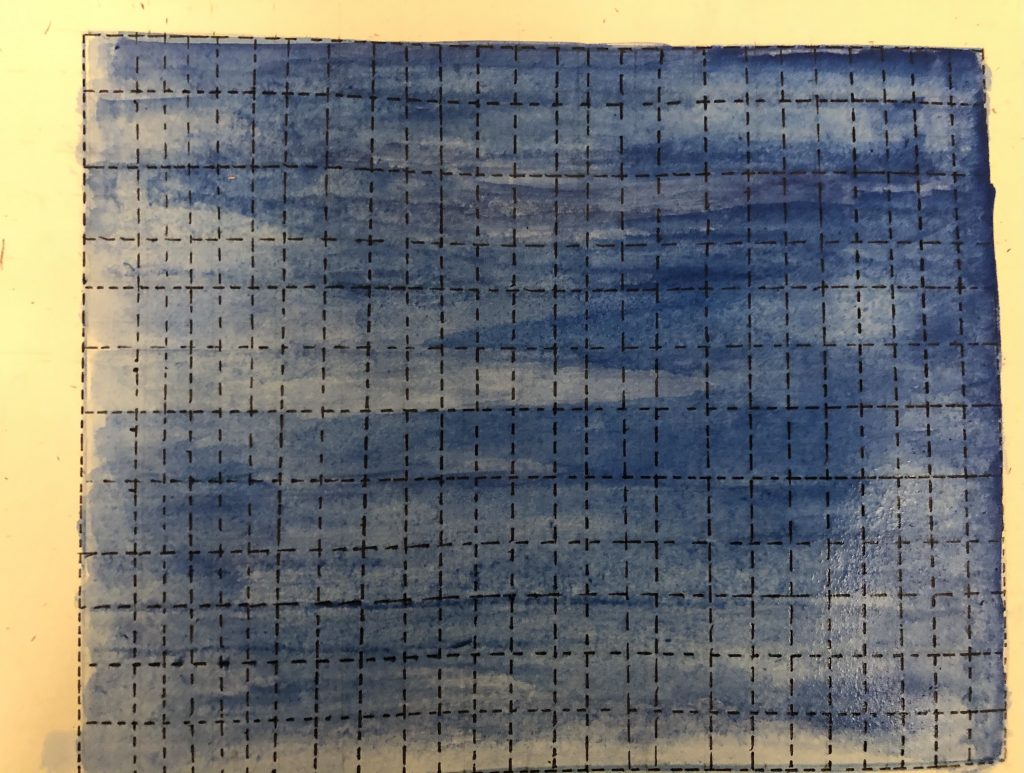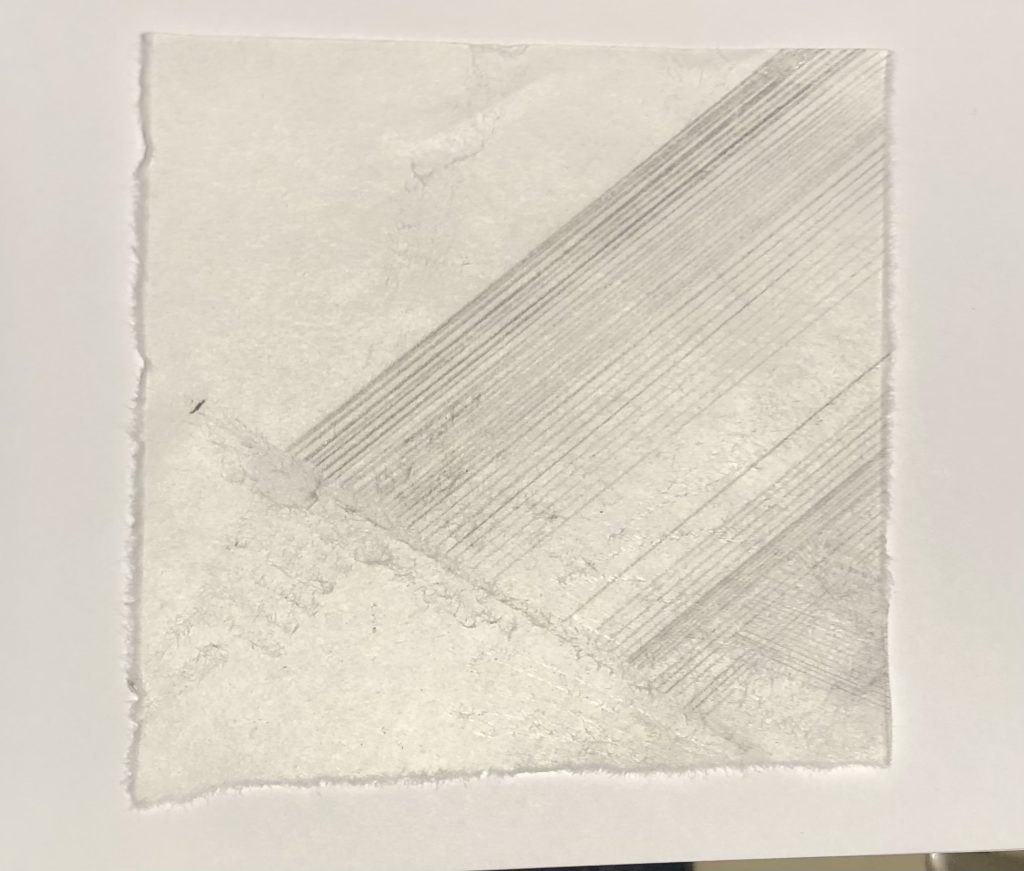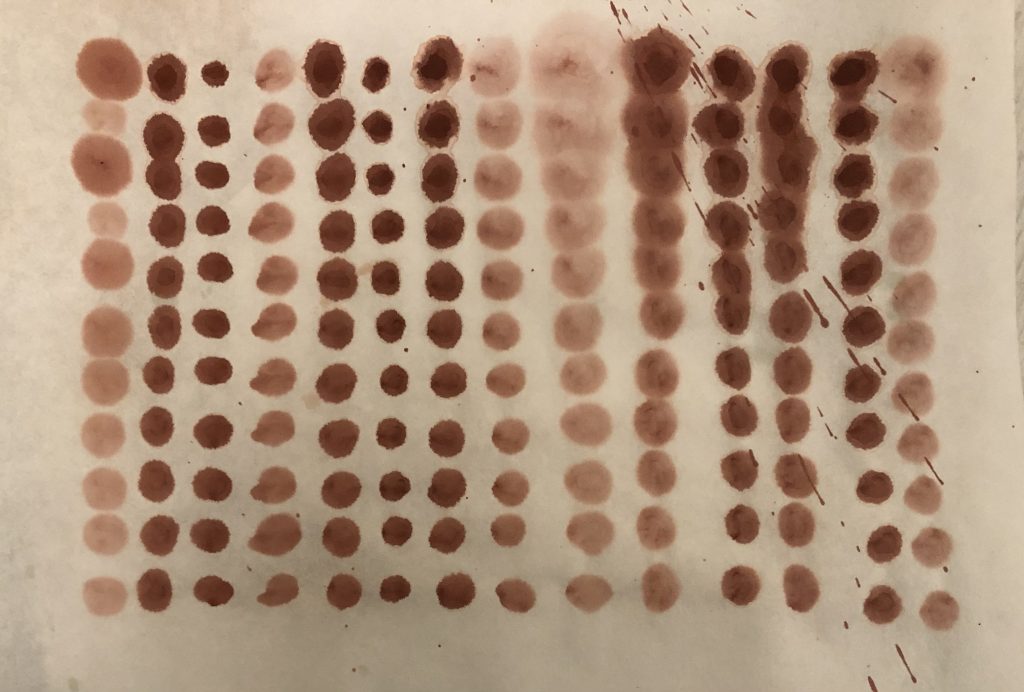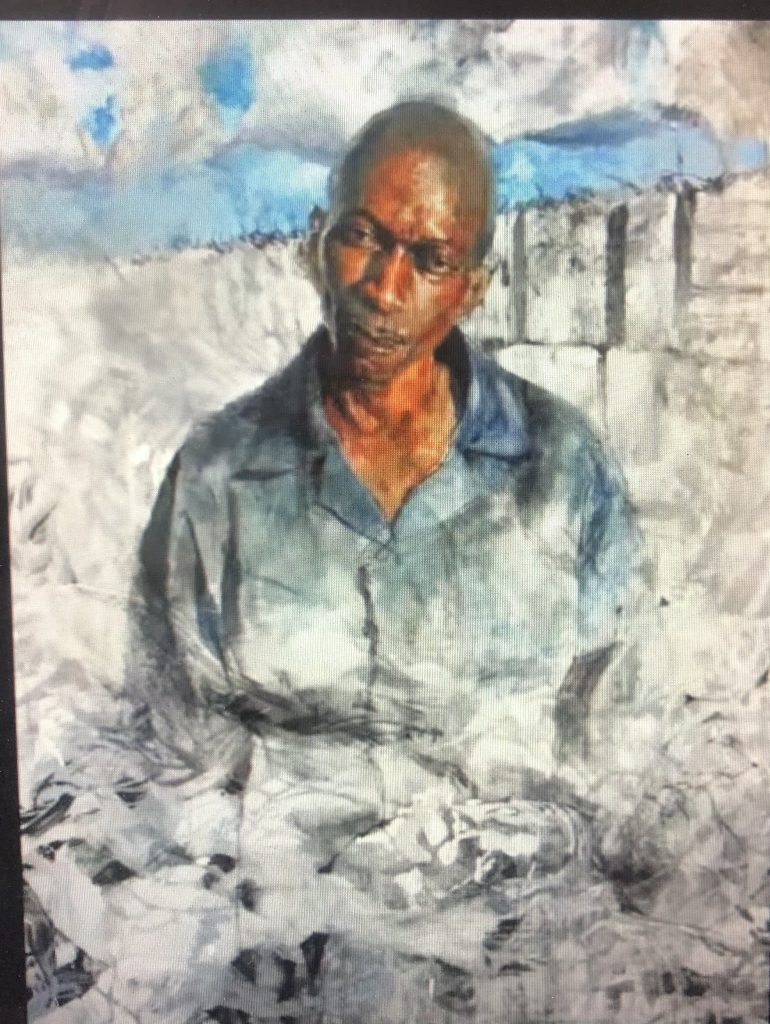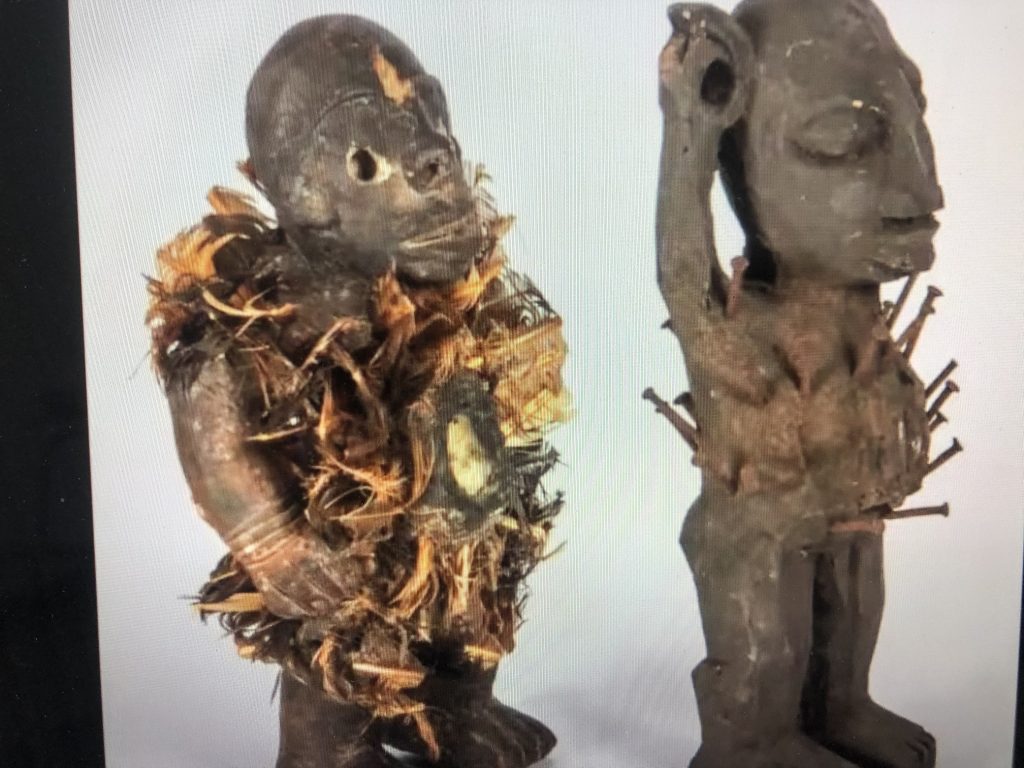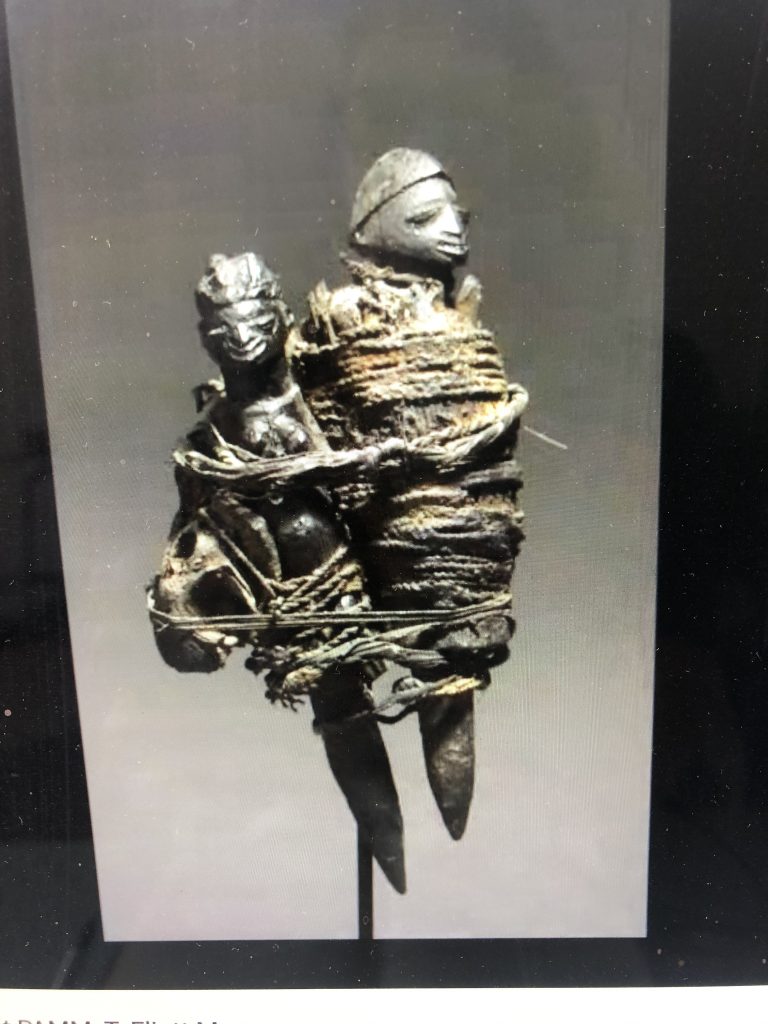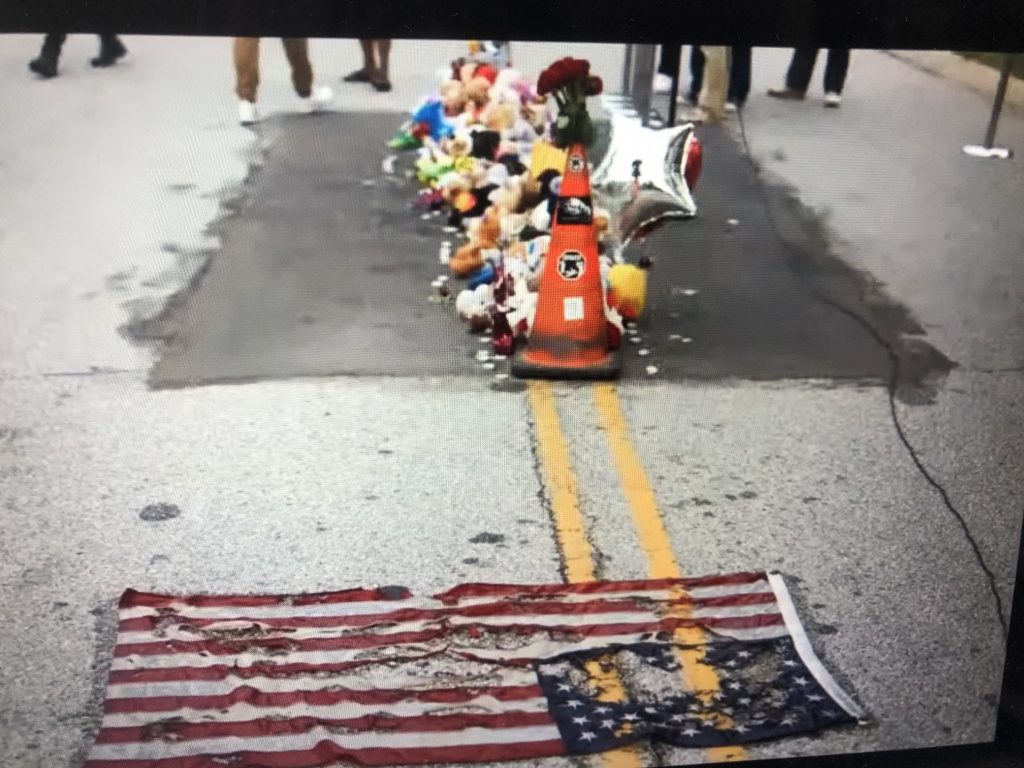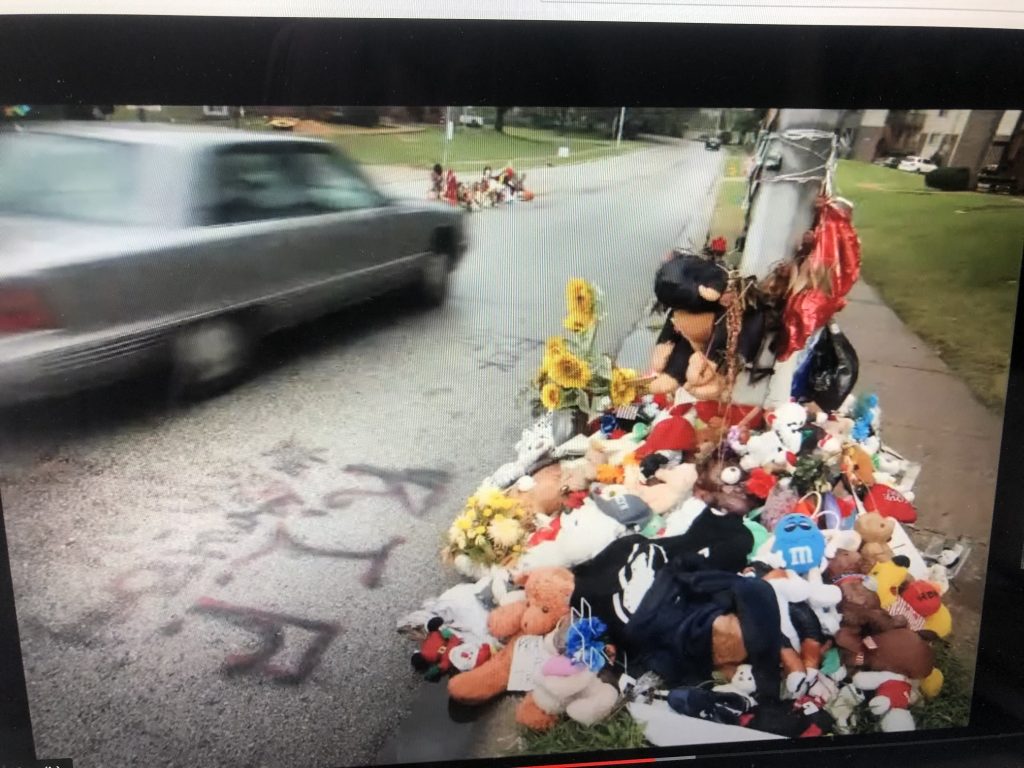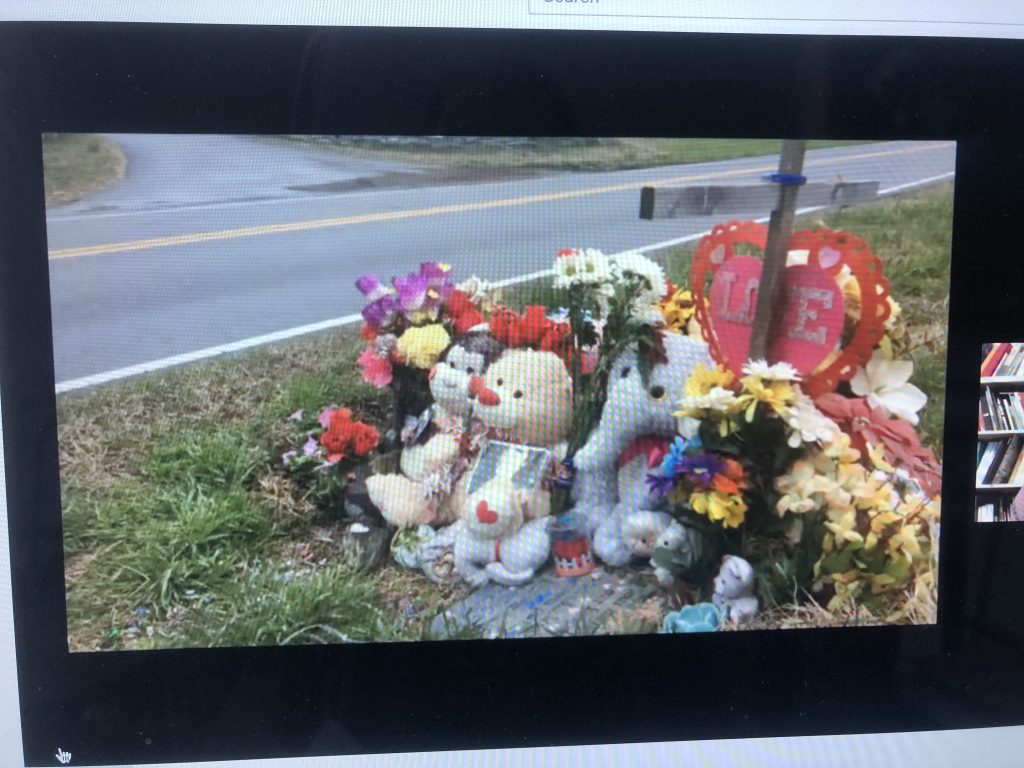TOPIC 2 Art and activism
‘Art activists do want to be useful, to change the world, to make the world a better place – but at the same time, they do not want to cease being artists. And this is the point where theoretical, political, and even purely practical problems arise.’
(Groys, 2014)
“Our lives are political because our bodies are’ – ‘to be raised in a land where you’re forced to assimilate…’. Achiampong
Art activism is a term that has its origins in the 1970s coming from the counterculture movements and student revolts of the late 1960s. Students used creative aesthetic means to pose political questions to the system from a position outside of political theory (Larsen, 2010:27). Activist artists went out onto the streets seeking to engage with the audience in order to readdress urgent social, political, economic and environmental problems. (Lippard in Larsen, 2010). Alongside this development Art activism also emerges from the need of artists to critique museums and galleries as structures that perpetuate the commodification of artwork/ artists and the capitalistic status quo as you examined in the topic four.
I am asking myself what I understand as social change – as a phenomena I think it is very complex.
Exercise 5.5: The role of art
In response to Groys’ text write a short paragraph in your learning log about what you think about the role that artists undertake when they use art as a means to change.
Analyze the precise meaning and political function of the word ‘aestheticization’. Groys writes that this world is used in confused or confusing ways as art operates in two domains, namely that of art in the proper sense of the word , as well as design, and he feels one should look at the difference for clarity around the meaning of aestheticization. As he analyses this, he argues that we need to look into the ‘dead past’ of art which was transformed into a representation, where on reveal the ideology of progress as phantasmal and absurd – defunctionalized it. Design wants to change the status quo – meaning it wants to improve/change reality. Art accepts that the status quo is dysfunctional, like it has already failed. Art activism politicizes art, it uses art as a political design (a tool)
Metanoia: As Groys describes it: “Metanoia, understood as the transition from the usual, worldly, natural perspective to an alternative, universal and metaphysical perspective, entailed the abstraction from one’s worldly perspective”
I need to ask myself whether the aesthetic is only understood and addressed in critique within an arena of relations of power and dominance – there surely is a lot of ambiguity. Reading the work of Tinh Minha-ha I am so more aware of how we deal with ‘representation” and how art focus of difference – by asking questions such as ‘who do we represent’ ? as well as ‘who do I represent’?
I think it is important to reflect at how the avant gardes and radical movements like the SI and Socialist International have sought to explain that the old standards are no longer valid and to look for what might be new standards. ( which I think were then seen as breaking with dominant norms and forms of subjectivation, thus making them oppositional to the situation of the day) These movements form collective positions of power from which activism can push towards bringing about change. Today one cannot underestimate the power of the media, especially social media
So I wonder, when we ask whether art is resistant, is it not a rhetorical question? There are surely questions about how effective activism became. I believe it is important to consider how I understand social change – as this is how I will now how effective art activism is. From what I understand this could be linked to current day theories of change and talking about ‘culture shifts’ – things that take their time as people try to make sense, of find meaning within their lives.
Artistic Activism, uses art forms as its medium of expression and action, so it seems to conform to an idealist theory of social change. Can one then go on to say that in this process art becomes the communication of ideas, ideals and perspectives and within culture symbolic representation (or expression) influences culture (how we make sense of our lives)? I cannot help but wonder about the effect of this Covid Pandemic and how it changed or social lives. It think if art can get to the heart of how people feel and experience is can bring social change.
Groys, Boris. 2014 On Art Activism pdf read on SCRIBD
Exercise 5.6: Profound change
Describe one work of art that has profoundly impacted on society and one work that has directly impacted on you personally, changing something significant. Discuss what it is about the two pieces that is powerful and why. Record your observations in your learning log.
I feel I need to look at the Renaissance as the place where the world changed profoundly – it had a snowball effect on the world, which I would call profound, but it was not only the one or the other, art, science, human mindset, political development…… I feel by now I understand that art participates in networks of power – here art becomes ‘political’ and aestheticise protest and or resistance with effects that the viewer think it accomplished something, true or false . Change is about a transformation – a caterpillar transforming into a butterfly is true transformation in nature, it leaves us in awe and fascinates science. Groy wrote about metanoia
Van Gogh, Starry Night
I think this work brought people closer to art and their own experience of art- people could relate to the work, which brings out emotions, imagination and or their own dreams/nightmares. It is aslo about humanity and its experience of being – we know the history of the artist. I am also very aware of the the artist as person – how his own personal story contributed in my opinion to his impact on art; at least he had a huge impact on me – I still feel touched when I can see his work and spend time around it.
Exercise 5.7: Transformations
Thinking about transformation more broadly, reflect on your own art
practice. Make a list or annotated photographic record in your learning log of the types of transformation that occur in your process or work and those that you aspire to.
Below is a list of photographic recordings of my work. Some are collaged with objects (made or find)
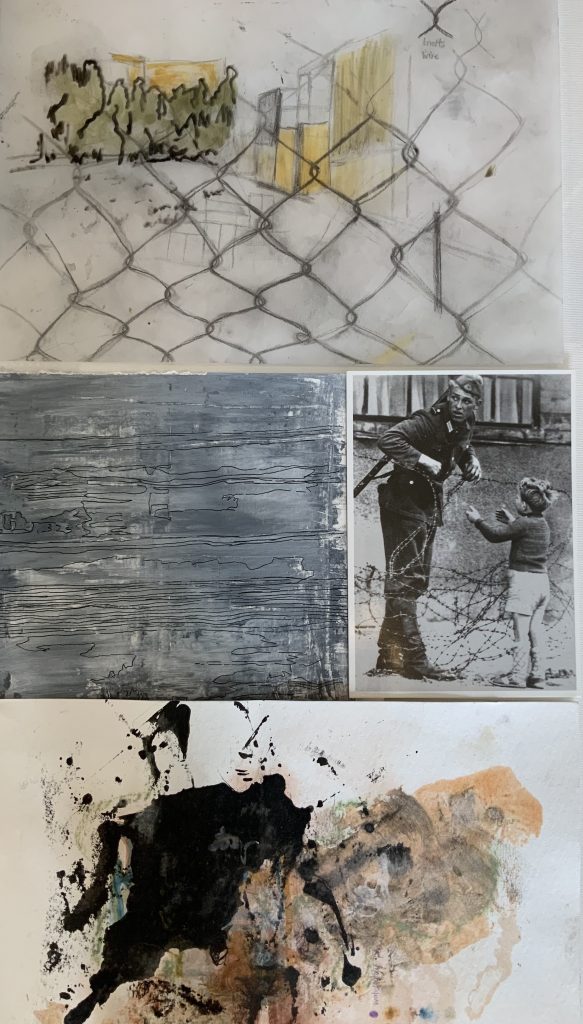
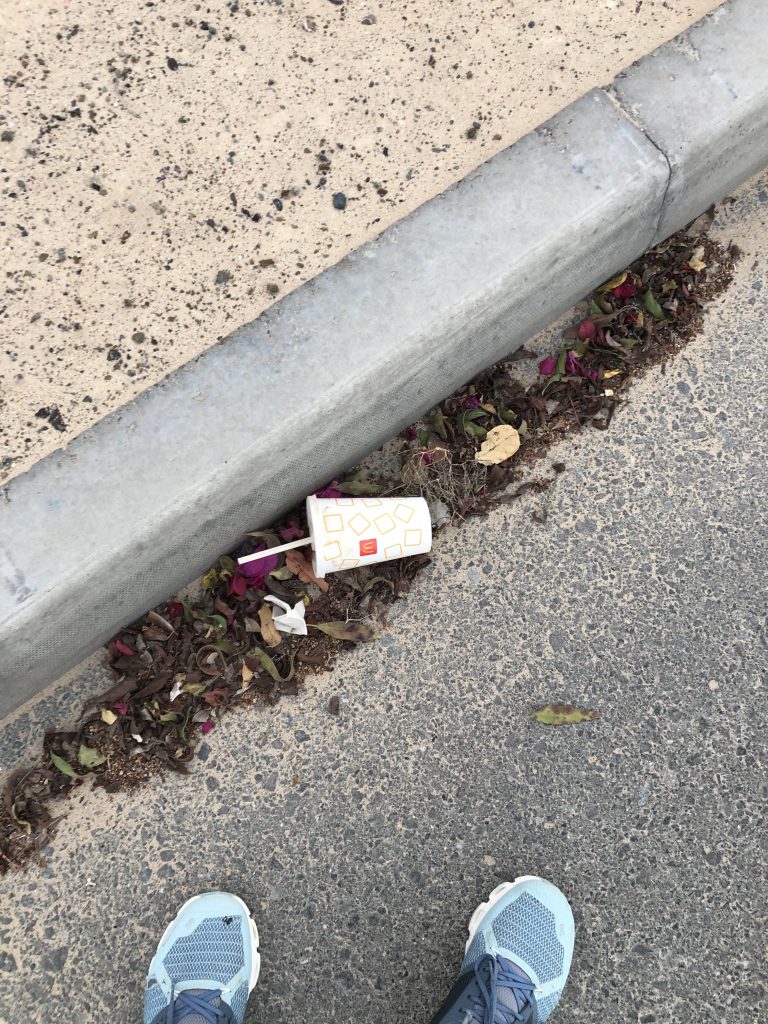

I became much more aware of process and of documenting as one continues doing something to the object. I allowed myself more to trust my instinctive feelings and try and show something in the process. It is hard not to judge my work in terms of being good or bad art, will it sell, will people like/dislike it. I made cut outs and later made tracings of it into a drawing.
I understand the importance to have an ongoing investigative and experimental working practice – painting and drawing do matter more now that I investigate these materials and also look into the basic principles of drawing/painting. I have also drawn my personal activities into that of my art practice – It is about what is around me, how I experience is as well as how I want to make a difference with my ideas about living and sharing life with others, human on non-humane. I have also made a commitment to work every day – a drawing at least a day. I hold these works nearby – consider to re-purpose or redevelop them. The idea is to go back to a work look at it differently, make something different was good to explore and keep the process going.
I started looking at cut-outs I made (inspired by the work of H Bosch). I worked with Velum paper to create cutouts as well as layering images. I found the detail of his work almost overwhelming and stimulating – almost futuristic. I think starting off in the workshop the ink blotches I was making made me ‘see’ more things in the marks , which led to cutting them up and placing them in another space/context and then trying to find my way into the work of Bosch. Some shapes were repeated as well as up-scaled. In terms of my walking and looking at how I connect with place, I thought of maps with cutouts. I see it as a way to understand or represent space without having to draw or paint an idea.
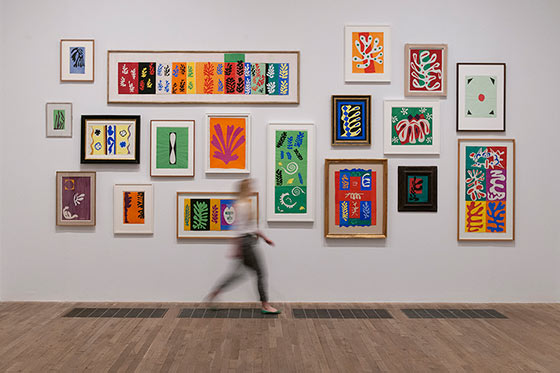
I think the learning was influenced by Matisse and his development of his own use of design and pattern in his work. I have admired his work as the patterns become the subject and they are placed within color. Should I explore this in my work where I could work with repetition and colour in series?

In my walking I have become aware of the ‘other’ like the minerals in sand and rock as the same living entity just as air/breath in my body makes me moving and alive. I could look at these objects and create from my looking and respect differences for what it is, a multiplicity, and understand that and inward look about understanding is about being open to difference and co-existence seen within the context of time and the forces at work, be it political powers, physical locality or cultural. I feel stronger about inter-connectivity within my practice and my lived life. I explored imprints of two inks on Dura-lar archival film and then imprint it onto the drawing on a drawing paper (120g/m2 75lb) I had to be careful not to work too much wet into the paper – thin and absorbent and could tear. I feel the imprint says something about layering that happens over time. It is something I can explore in bigger works and would like to do. I found the process free, I had not much control over the outcome and see potential in mark making, colours to explore with. It reminds me of lichen on stones I see in walks back in SA, but also of puddles and mud.
I like to take time to do a repetitive process – like drawing lines , work onto other work, do cut outs , draw with charcoal- I feel I imprint something much more significant as I re think the work and how I relate to it. I am asking myself how I find that walking became a place where I could remove goals, like the speed, the place – I just go for a walk or even a stroll, especially along the beach. Many times there are moments in this walk we I feel I reach a fleeting moment of insight into something I was reading in my studies and battling to bring it into my practice. I think mostly it is when I re read my tutors formal feedback – it takes time to focus on ideas when I am also reading and trying to react to exercises in writing. I do feel I become distracted. Drawing has in many ways become a place where I bring my attention to – and the walking has helped.
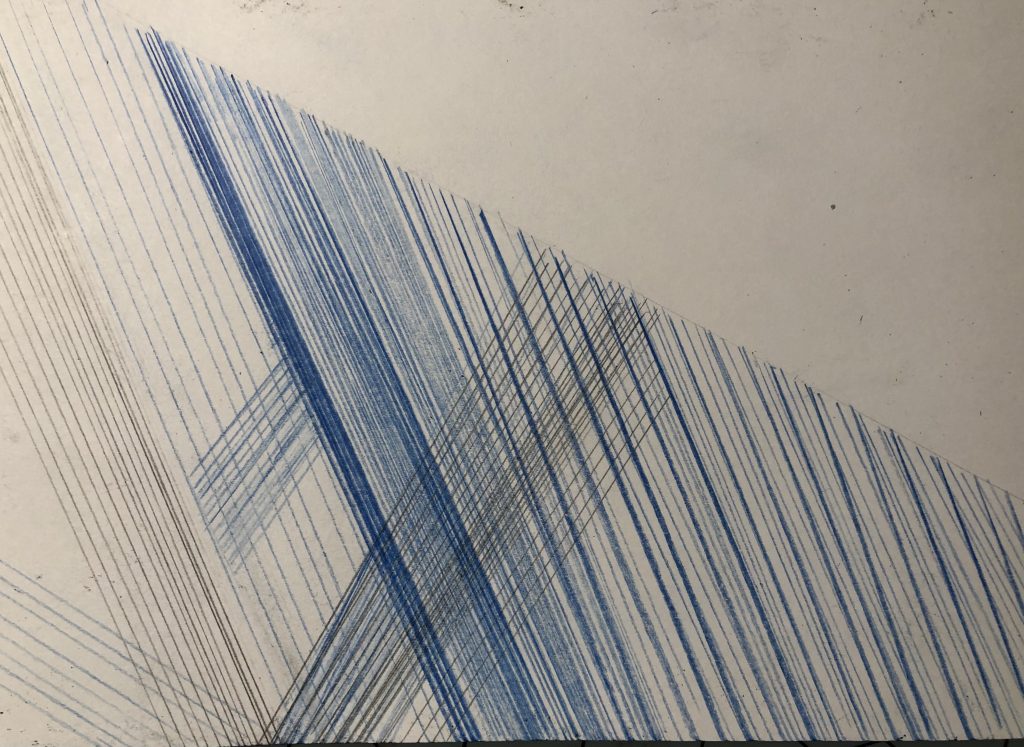
I do feel strong about the footprint we are leaving which has become unbalanced and contributive to ecological and health disastrous – amount of garbage which is not biofriendly and filling up land and waterways, too much consumption of fuels, energy, plastic . This takes me to our histories and past – which we should consider in our ways to creative growth and transformation. Below are experiments with prints and then drawing onto them – I feel they become maps of thoughts.
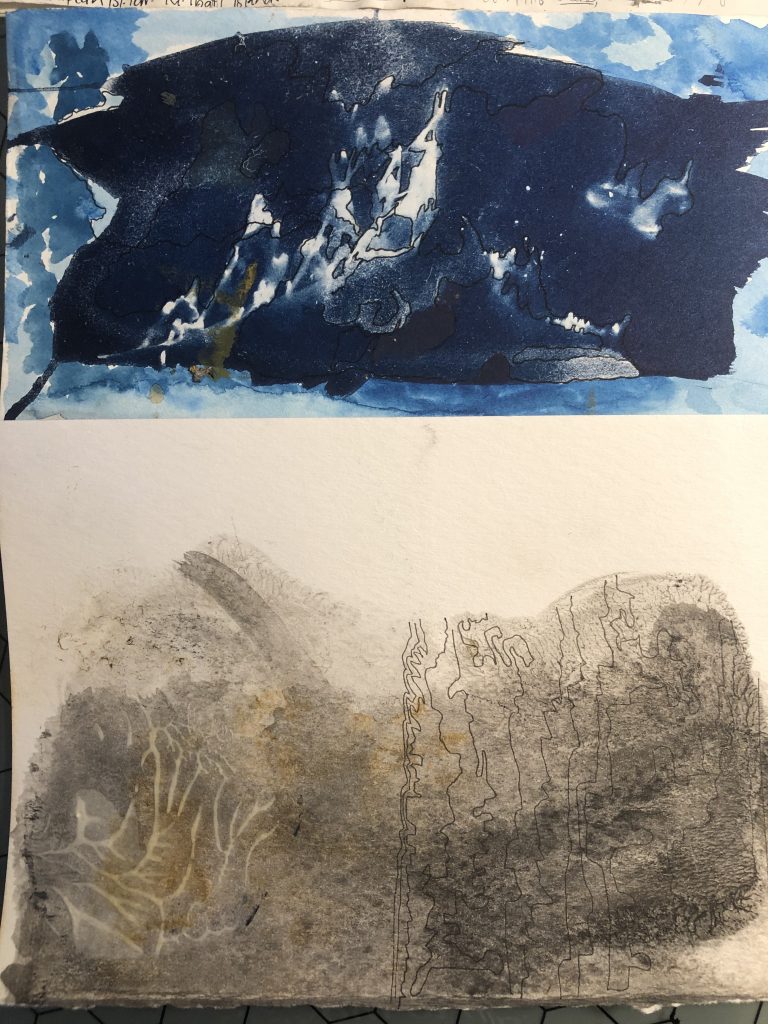
I think the biggest change has come in a realisation that with art one do not have (should not?) tell or show people (viewers/communities) what to do, but if they engage with your work, it can connect them to (all?) their senses, body, and mind. What a lovely effect if I can make the world felt, without describing it with words or through explaining myself.
The great discovery was the work of T Elliot Mansa when I did preparation work for a workshop with the OCA (3 March 2021)
Why I add this:
This artist is and was primarily a painter as well as identifying himself as a political art maker. He came to a time in his life where he questioned the efficacy of his work. He wanted to make art that was speaking to what was going on and he particularly wanted to speak to the necessity of the Black Lives Matter movement around the time of the killing of G Floyd. His work was mostly portraiture style and he felt that by doing this, a large part of the meaning/importance of the work, was within representing skills and not getting toe the level of allegory which he felt was missing. For him the work had to be explained by an artists statement of press release to really carry over the concept.
As his practice developed to assemblage work he felt that he is not thinking so much about image, but about the process
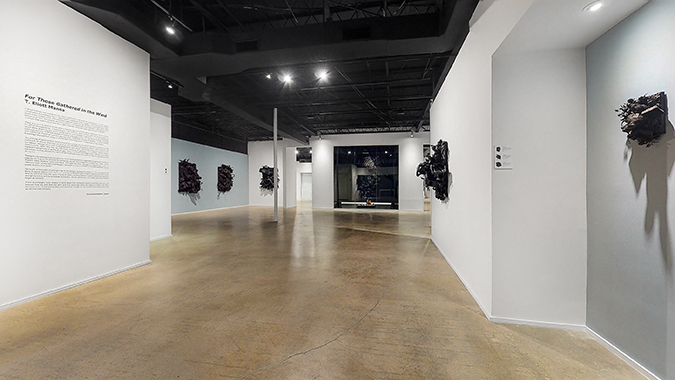
His practice and the body of work he exhibited recently, 2020, is mainly in black and made of found objects which focus around kids stuff – soft toys, but other discarded items, like a stroller, a car seat, etc. Below are a painting he did before he moved to the assemblages. The two other images are of cultural sculptures which are made to protect and fight. The two images in the middle are hunters that symbolise spirits that travel to hunt down your enemies or wrongdoers – he talked about the police in current USA as having this goal to protect, but that they are the ‘hunters’ in this current narrative and how this affect the lives of Black men, women, children and trans community. The sculpture on the right is two people tied together with rope (originates from Benin) and refers to being bound – the slave trade.
In the video chat of PAMM the artist spoke about other roadside memorials that are being created all over the world and how this influenced his work. see images below) I find that he create connection with culture here – he went to visit Benin to connect and research these worlds and became aware of significance of having these shrines as a way to respect,commemorate, remember, honor trauma as a ritual practice which can lead to psychological wellness, but which is undeniably part of the history of Africa and colonialism. One is very much aware of the colonial influence that used its power to destruct the indigenous and traditional religions and how people are coming to embrace it again. These celebrations made him also aware of the multi sensory way people relate to these shrines or made objects. One sees this in his body of work. He use black as colour palette – he tells that other than the Western culture black is seen as the colour of life. In many of these objects he saw that blood and other liquids where thrown/poured over them, as part of the offering ritual and how this add to a patina and crusty texture. There was also the counter aesthetic to the works which he tries to maintain; namely the are a defense by an offense, their goal is to protect, but they look intimidating or even horrifying. ( I wonder about kitsch and how we came to fetish over things as a part of holding on to things/memories?)
So in the body of work exhibited the viewer experiencing a shift of meaning – kids stuff are usually brightly coloured and now these assemblages are all black, the colour of death. He see that meaning is shifted, he honours life but also signifies death with these assemblages. With the mounted objects, which could remind of paintings, he creates a different aesthetic by cancelling out paint as the medium – specificity is other. The works are mostly small to draw the viewer into the work to see the details and textures.
